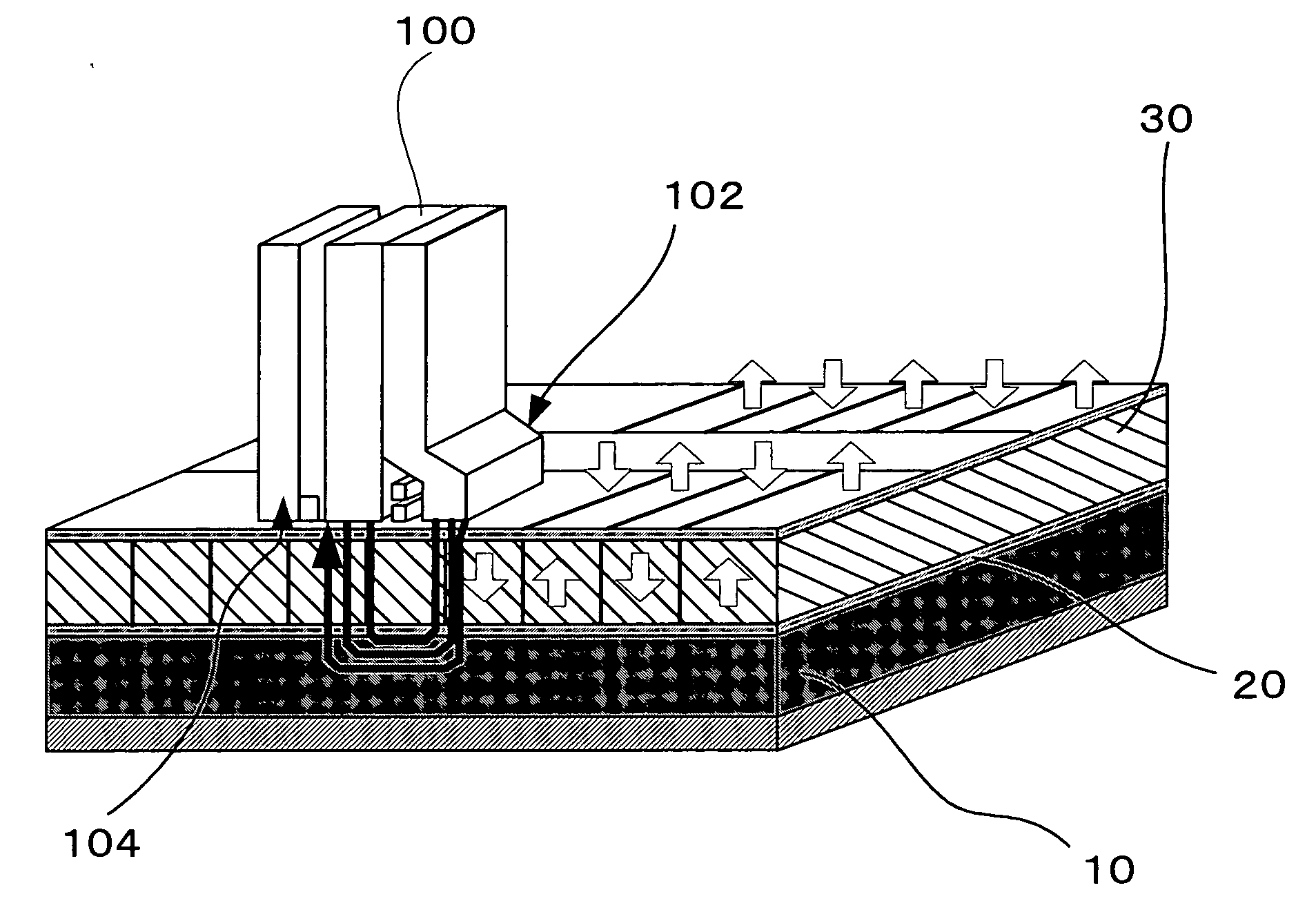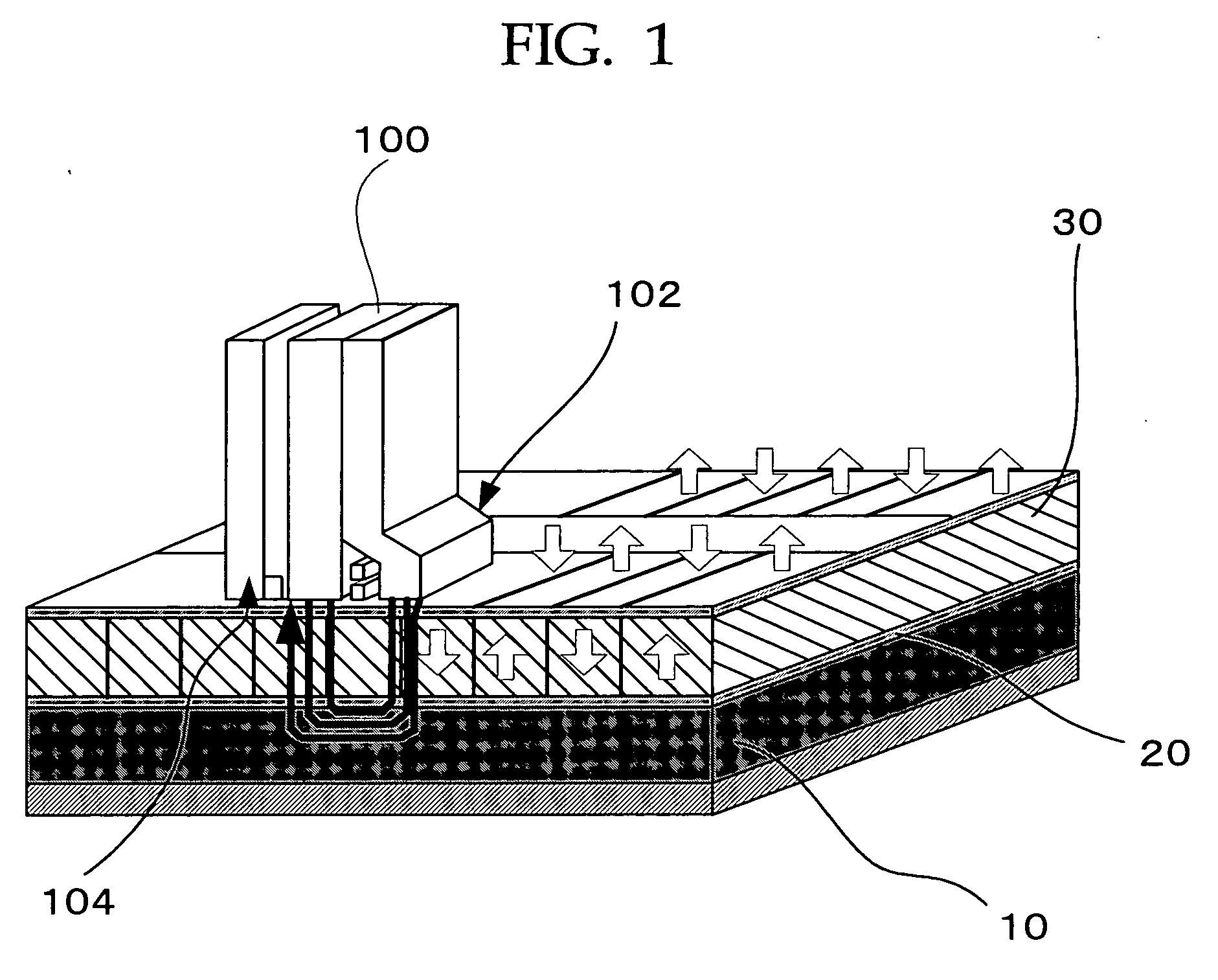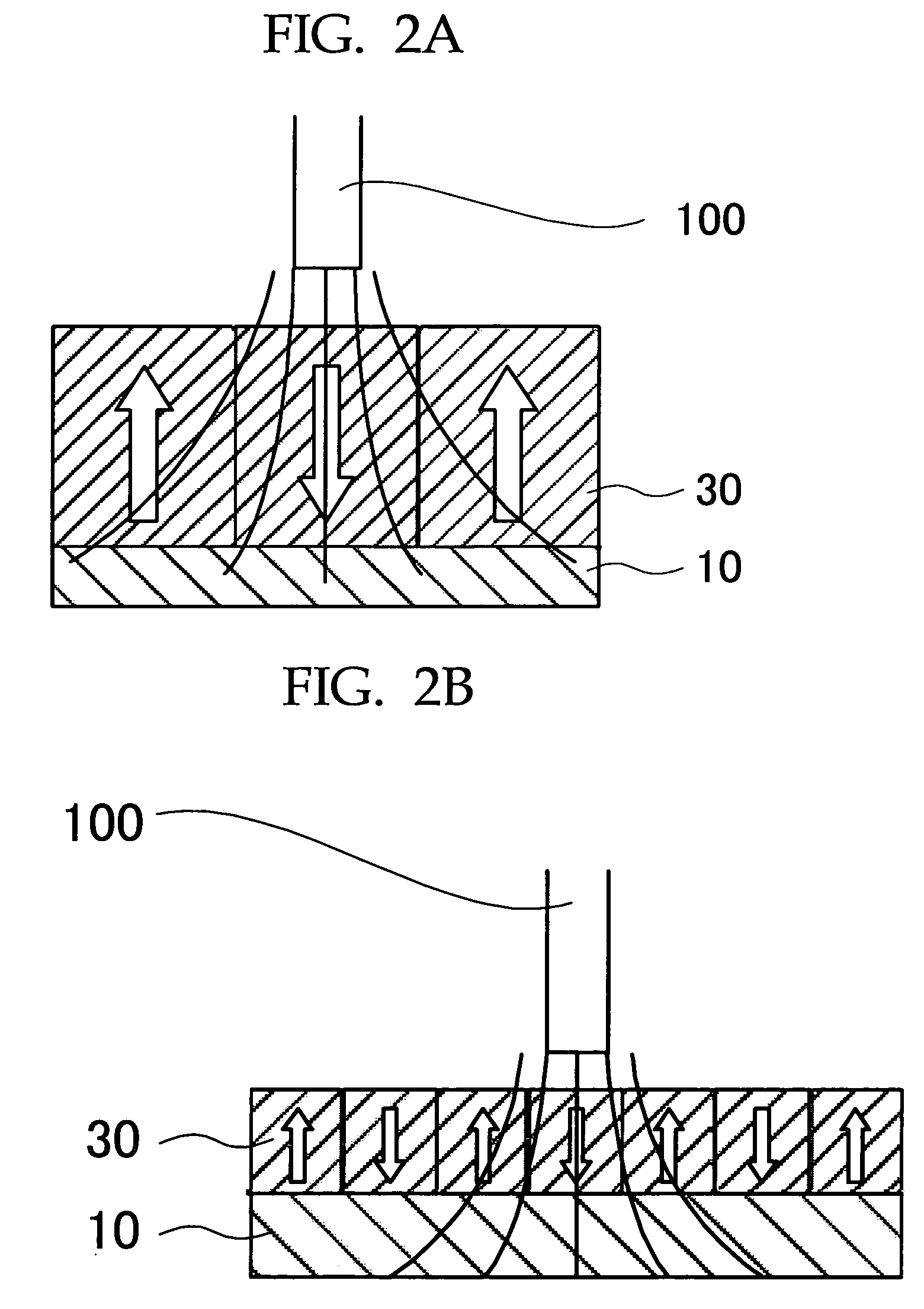Nanohole structure and method for producing the same, stamper and method for producing the same, magnetic recording medium and method for producing the same, magnetic recording device, and magnetic recording method
- Summary
- Abstract
- Description
- Claims
- Application Information
AI Technical Summary
Benefits of technology
Problems solved by technology
Method used
Image
Examples
example 1
Preparation of Nanohole Structure
[0252] As shown in FIG. 8A, convexoconcave pattern 410 was formed by concentrically drawing lines on a resist layer of 40 nm thick spin-coated on glass support 400, using an electron beam exposure device of model r-θ. In the convexoconcave pattern 410, the width of the concave portions 420 was 150 nm, the width of the convex portions 430 was 90 nm, and the height of the convex portions 430 was 30 nm.
[0253] Next, as shown in FIG. 8B, glass support 400 was immersed into a vessel containing a dispersion of fine particles having an average particle diameter of 60 nm, and the dispersion was subjected to centrifugation, thereby fine particles 450 were arranged into a monolayer on the surface of glass support 400 as shown in FIG. 8C.
[0254] Consequently, the fine particles 450 were arranged into regular alignments of hexagonal closest packing, the regular alignment C and the regular alignment D at adjacent concave portions 420 and convex portions 430 were...
example 2
[0260] A nanohole structure according to the present invention was applied to a magnetic recording medium of magnetic disk, and the magnetic recording medium was produced and evaluated as to the properties as follows.
—Step for Forming Soft-Magnetic Underlayer—
[0261] The step for forming the soft-magnetic underlayer described above was carried out by way of forming or laminating FeCoNiB of the soft-magnetic underlayer to 500 nm thick by an electroless plating process.
—Step for Forming Nanohole Structure or Porous Layer—
[0262] The step for forming a nanohole structure was carried out as follows. Nb and Al were laminated to 5 nm and 200 nm respectively on the soft-magnetic underlayer by a spattering process. Three laminated substrates of this configuration were prepared by the same way, and the pattern of aligned fine particles was imprint-transferred to the aluminum layer by use of the Ni stamper obtained in Example 1 having convex portions of 60 nm diameter and 40 nm height.
[0263]...
example 3
[0284] A magnetic recording medium according to the present invention was prepared. CoZrNb, which being a material of soft-magnetic underlayer, was formed into a film of 200 nm thick on a silicon substrate by a spattering process. This procedure corresponds to the step for forming a soft-magnetic underlayer in the method for producing a magnetic recording medium according to the present invention.
[0285] Next, an aluminum layer was formed on the soft-magnetic underlayer into 500 nm thick by a spattering process using an aluminum target of purity 99.995%. The metal layer of aluminum was subjected to anodization using the soft-magnetic underlayer of CoZrNb as an electrode in the same manner as Example 2, thereby nanoholes or alumina pores were formed into the metal layer of aluminum. The nanoholes or alumina pores had an aperture diameter of 40 nm, an aspect ratio of 12.5, and plural regular alignments that were arranged adjacently and disposed concentrically and alternately.
[0286] A...
PUM
| Property | Measurement | Unit |
|---|---|---|
| Density | aaaaa | aaaaa |
| Shape | aaaaa | aaaaa |
| Frequency | aaaaa | aaaaa |
Abstract
Description
Claims
Application Information
 Login to View More
Login to View More - R&D
- Intellectual Property
- Life Sciences
- Materials
- Tech Scout
- Unparalleled Data Quality
- Higher Quality Content
- 60% Fewer Hallucinations
Browse by: Latest US Patents, China's latest patents, Technical Efficacy Thesaurus, Application Domain, Technology Topic, Popular Technical Reports.
© 2025 PatSnap. All rights reserved.Legal|Privacy policy|Modern Slavery Act Transparency Statement|Sitemap|About US| Contact US: help@patsnap.com



